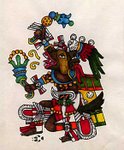- - ----------Trick & Treat
Death at the door,
----or lurking among the leaves,
death itself is the inevitable trick;
the only treat worth the having,
----to love fearlessly,
------------------------and well.
--------------© Rafael Jesús González 2018
(The Montserrat Review, Issue 7, Spring 2003;
author’s copyrights)
-----------Chasco y Regalo
La muerte a la puerta,
----o en emboscada entre la hojas,
la muerte misma es el chasco inevitable;
el único regalo que vale la pena,
-----amar sin temor,
------------------------y amar bien.
------- --------© Rafael Jesús González 2018
-







.jpg)
.jpg)


.jpg)




